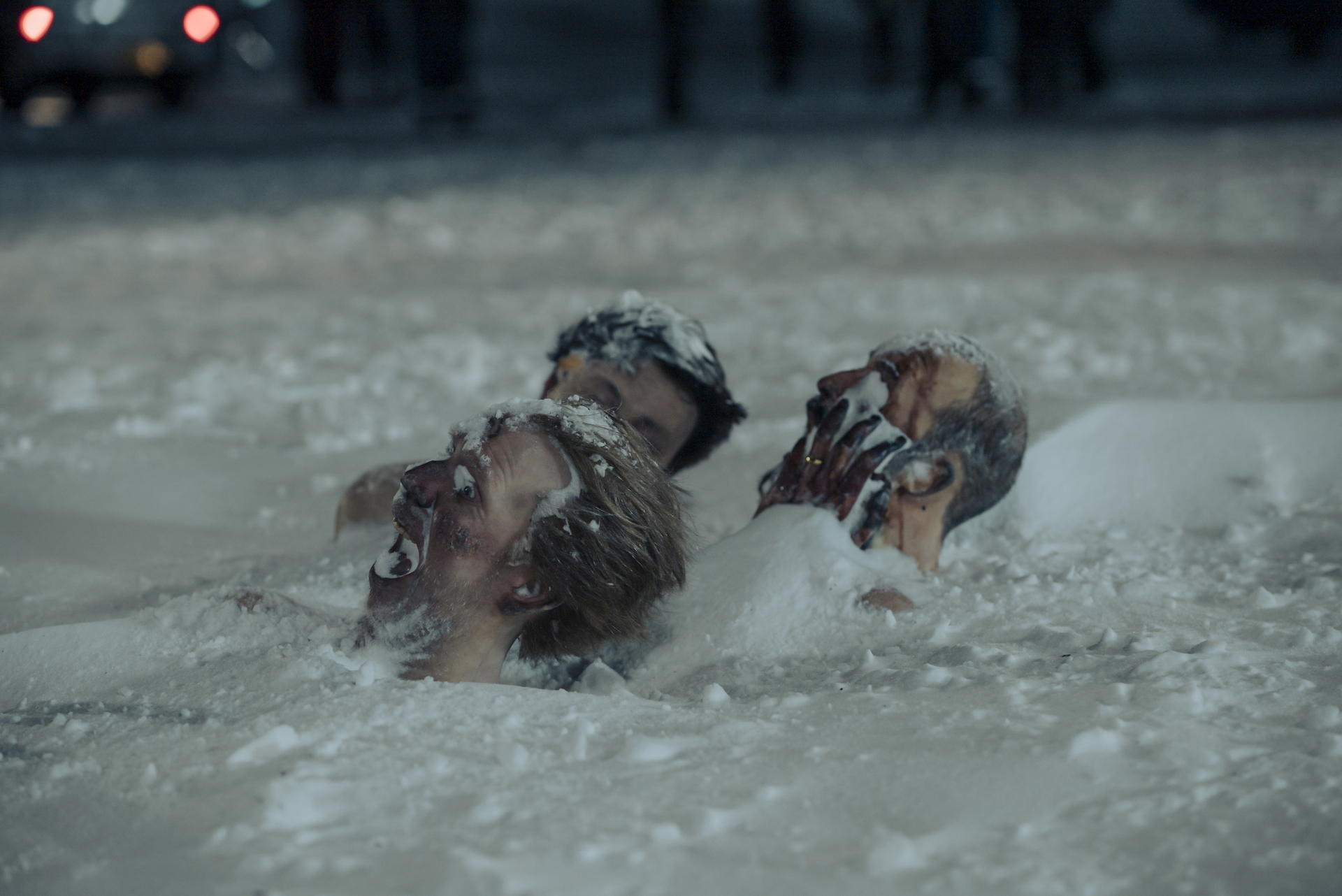Warning: This post contains spoilers for episode 2 of True Detective: Night Country.
The mystery at the heart of True Detective: Night Country is starting to heat up. Literally.
After arriving at the site where the missing Tsalal Arctic Research Center scientists were found frozen into a grotesque tableau in the season premiere, Ennis Police Chief Liz Danvers (Jodie Foster) decides to have the mass of bodies transported to the town ice rink to slowly thaw. But not before an officer haphazardly snaps off one of the scientist's hands, prompting a reaction that alerts everyone around that he's somehow still alive.
Night Country's second episode centers on Danvers and state trooper Evangeline Navarro's (Kali Reis) search for a connection between Annie K (Nivi Pedersen), a local Indigenous woman who was murdered six years earlier, and Tsalal paleomicrobiologist Raymond Clark (Owen McDonnell), the mysteriously convulsing scientist from the season's cold open. In the premiere, Danvers discovered that Clark had been photographed wearing what appeared to be a pink parka that once belonged to Annie K. And after learning this episode that he also had a spiral tattoo on his chest that matched both the design drawn on the surviving scientist's forehead and a tattoo on Annie K's back, it seems clear they're onto something.

Some smart detective work by Navarro leads her to the realization that Annie K and Clark were apparently involved in some level of romantic relationship, which they kept secret by rendezvousing in an old RV parked at a rundown trailer park known as the Nook. When Danvers and Navarro go to investigate the trailer, they discover Annie K's phone inside alongside a mess of animal bones, a collection of creepy yarn sculptures, a shrine of photos, and—you guessed it—another painting of that same crooked spiral.
Read more: Breaking Down the True Detective: Night Country Premiere—And Its Possible Supernatural Twist
What's the deal with the True Detective spiral?
Seasoned fans of True Detective will remember the spiral from the series' first season, in which it became known as a symbol of the sadistic cult at the center of the neo-noir crime saga.
Detectives Rust Cohle (Matthew McConaughey) and Marty Hart (Woody Harrelson) originally encountered the spiral painted on the dead body of Dora Lange, whose murder set in motion their investigation into a string of ritualistic killings in the Louisiana bayou. It then continued to crop up in various forms throughout the season, both as a literal sign of the cult and a more overarching motif representing the series' occult influences. (The Tuttle United company name-dropped in Night Country as the corporation funding Tsalal also seems to be a reference to the sinister Tuttle family behind Season 1's cult.)
While we still don't know what the spiral means in the context of Night Country, Foster says she believes all the True Detective stories are interconnected in some way. "Whether it's the Louisiana bayou or the big city of Los Angeles or the Ozarks or northern Alaska, how these extreme settings affect the psyches of the detectives is very important," she told TIME. "There's an eerie connection between these places and the detectives' journeys as human beings."
Are there other references to True Detective Season 1 in Night Country?

Naturally, the spiral isn't Night Country's only callback to True Detective's original entry.
When Rust and Marty examine Dora Lange's diary in the second episode of Season 1, they find mentions of the "Yellow King"—a title they eventually discover refers to a seemingly mythical figure worshipped by the men responsible for killing Dora and an untold number of other women and children. There are also several lines in Dora's diary pulled directly from Robert W. Chambers’ 1895 anthology The King in Yellow, in which a fictional play by the same name casts an ominous shadow over the 10 short stories that make up the collection of "weird fiction."
In the book, the play is said to lure readers in with an ordinary first act before driving them mad with a second act that reveals unbearable truths about the universe. Nods to the play appear throughout the anthology, but it features most prominently in the collection's debut story, a tale titled “The Repairer of Reputations" in which an unreliable narrator named Hildred Castaigne reads The King in Yellow while recovering from a head injury in a mental asylum.
Those familiar with this literary lore may have noticed that the Night Country premiere opens with an epigraph attributed to Hildred Castaigne: "For we do not know what beasts the night dreams when its hours grow too long for even God to be awake."
However, that quote never actually appears in Chambers' work. Instead, Season 4 showrunner Issa López said she made it up to include another "little wink" to Season 1 for the fans. "I was looking for the perfect quote to talk about the things that hide in the dark and I couldn't find it," she told Business Insider. "So I wrote it."
More Must-Reads From TIME
- The 100 Most Influential People of 2024
- How Far Trump Would Go
- Scenes From Pro-Palestinian Encampments Across U.S. Universities
- Saving Seconds Is Better Than Hours
- Why Your Breakfast Should Start with a Vegetable
- 6 Compliments That Land Every Time
- Welcome to the Golden Age of Ryan Gosling
- Want Weekly Recs on What to Watch, Read, and More? Sign Up for Worth Your Time
Write to Megan McCluskey at megan.mccluskey@time.com